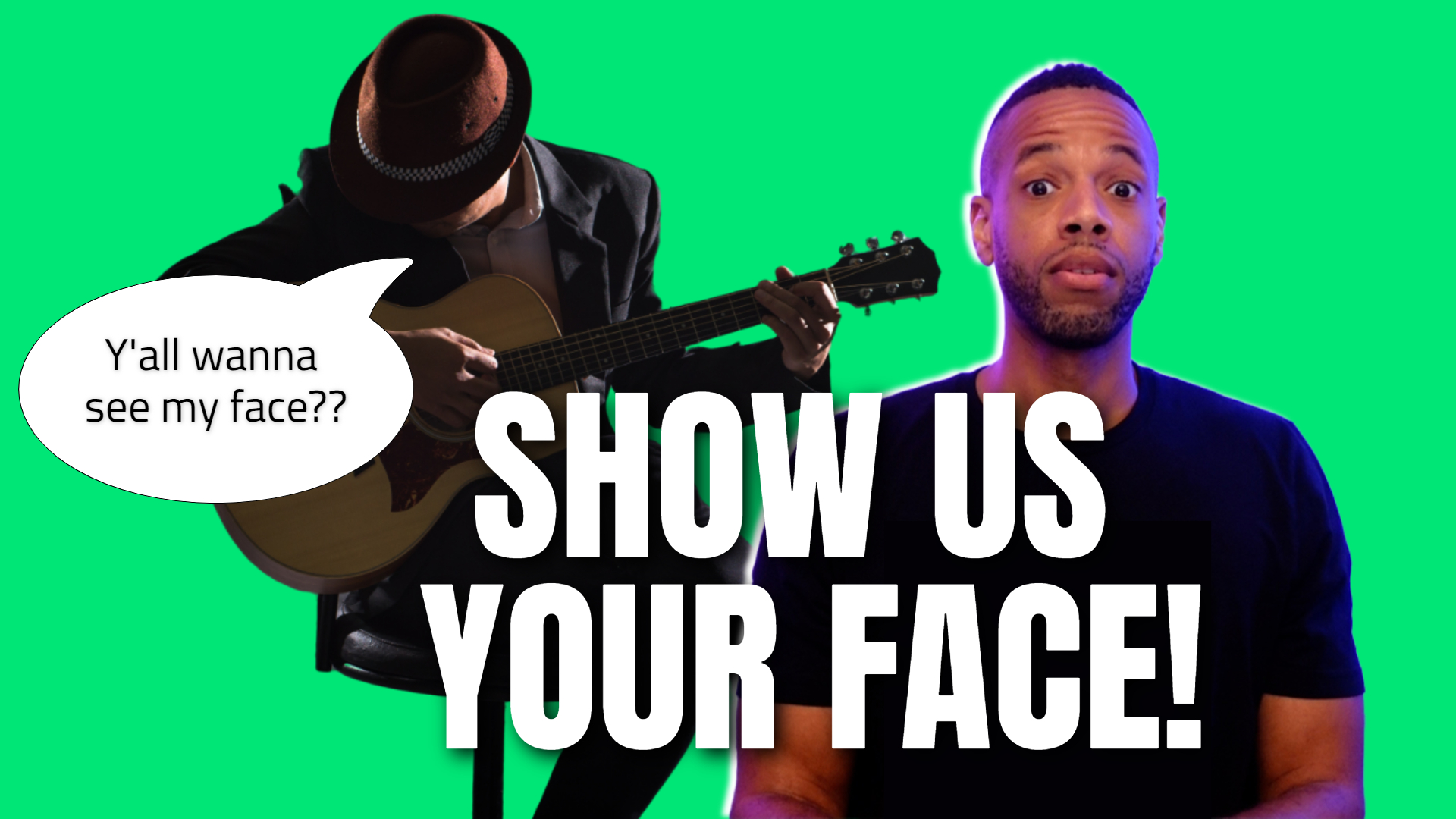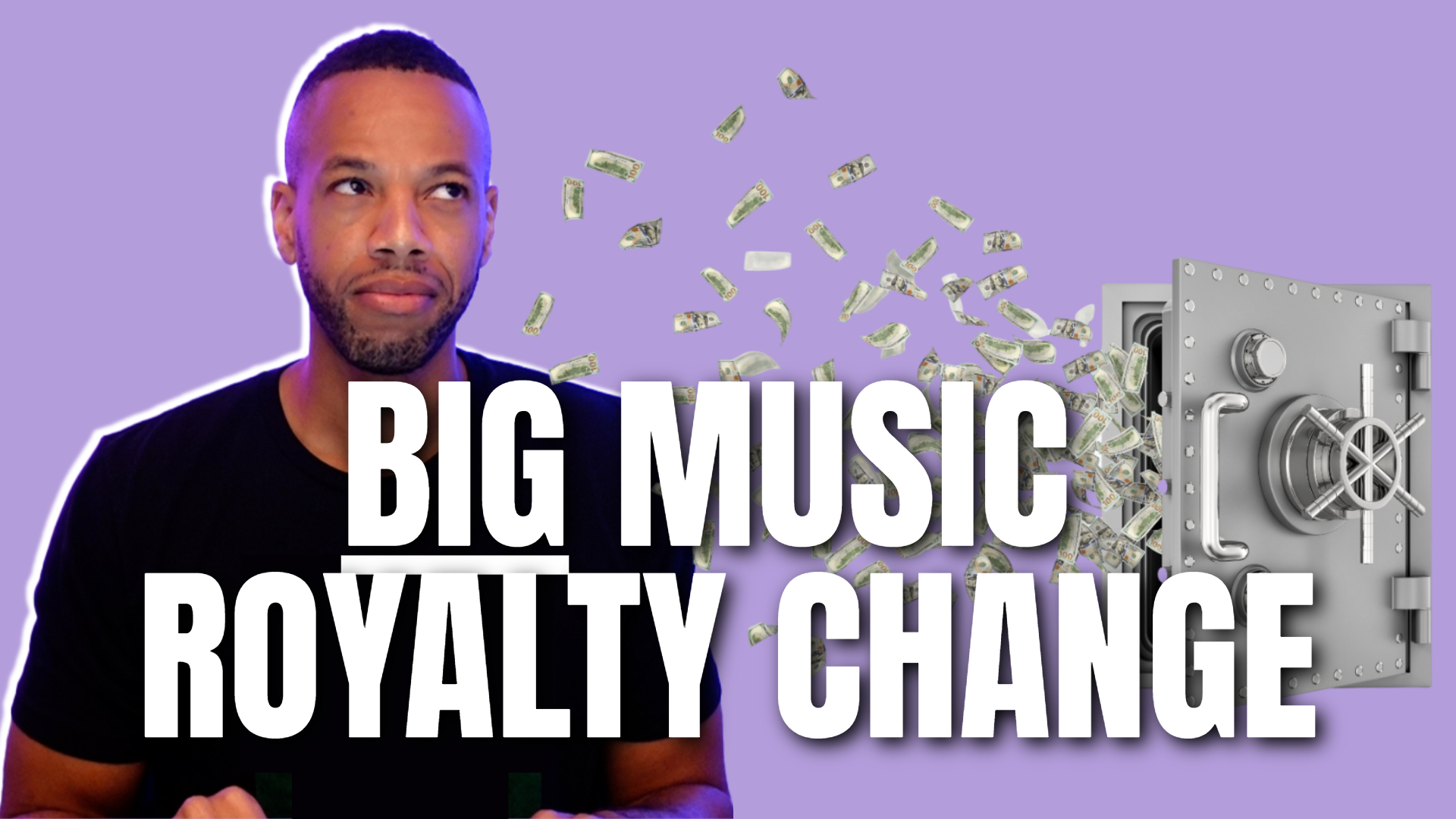Types Of Music Notes: Learn Every Kind In 7 Minutes
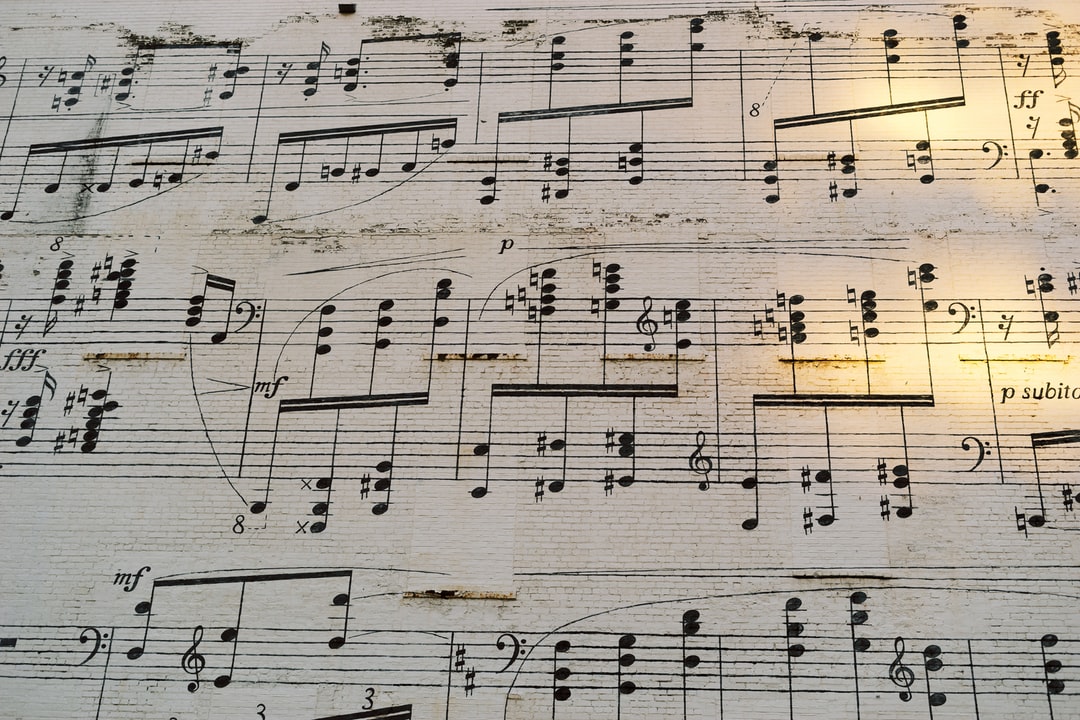
*This article may contain links to affiliate products & services. We have reviewed these services to try and ensure the highest quality recommendations*
Written by Ramsey Brown.
Whether you are a singer, songwriter, instrumentalist, or just a music enthusiast in general, understanding musical notes and the meaning behind them can give you a further appreciation for how music is made and played. Musical notes are the tones generated from musical instruments, vocal chords or any other source that is capable of producing music or sound.
It is through these notes that songs are composed of and the musical alphabet with which scores are written. We use musical notes to represent sounds in a score, therefore, they are a system of musical notation. If you are just beginning your music theory studies, you’ll find that this is the most basic element used in music. Learning these music notes and recognizing their names, times, and values will be your very core foundation of being able to read music well.
If you are a performing musician or are part of a choir or orchestra, there are 6 different main notes that tell you how long to play each sound for. These symbols are used by composers to communicate beats, rhythm, frequency, and so on. If you know nothing about music notes or the meaning behind them, then fear not. In this article, we are going to cover each of these notes in depth so you will be on your way to reading music in no time!
Music Note Names and Their Time Values
Apart from the already known scale with the seven basic sounds: C D E F G A B, musicians must know how long to play each sound for. This is where different notes come in. Composers demonstrate the length of a note through these various different symbols mentioned below:
Whole Note (Semibreve)
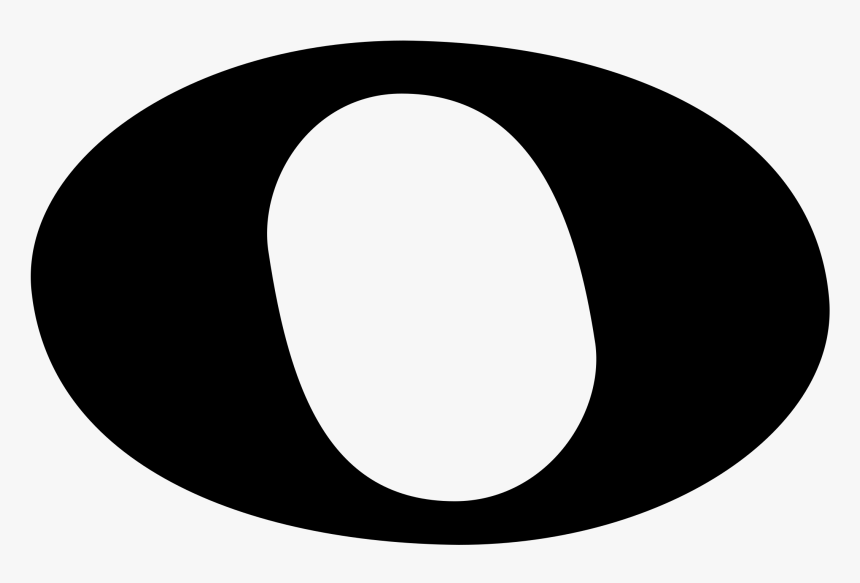
This note is popularly known as a semibreve. However, in the USA it is most commonly referred to as a whole note. Whole Notes are shaped like a horizontal oval or zero with the right and left sides somewhat thicker than the top and bottom. The oval shaped part of a note is called the ‘note head’, which will help you remember this note in the future.
A whole note has a duration of four beats. That means that when you go to play the note, you must play it for four seconds until you move on to the next note. The time also varies according to the speed of the song.
Half Note (Minim)

The second note is called a minim or half note and is very similar to the whole note. The difference in resemblance is that the half note has an added vertical line on the right side of the note head and pointing up in direction. This line is called the stem.
This stem halves the duration of the note which in this case, the half note has half the duration of the whole note, 2 beats. This means that when we play this note it will take two seconds to move on to the next one. This is very easy to remember as long as it is played half as long as a whole note, hints why it is called a half note.
Quarter Note (Crotchet)
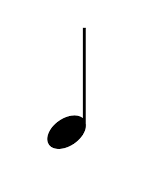
In terms of shape, a quarter note is the same as the half note. However, the note head in a crotchet is filled completely black. So with this note you will see a black filled oval with a stem pointing up.
This note is half as long as the half note, that is four times less than the whole note. In calculations, the quarter note has a duration of one beat.
8th Note (Quaver)
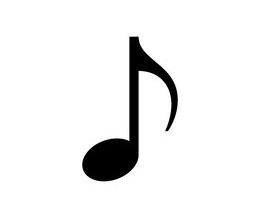
It's the same as the quarter note but has a tail that comes out from the top of the stem. The note tail is also referred to as a flag or a hook.
This also divides the duration of the previous note, the quarter note, so the duration of the eighth note is half a beat.
16th Note (Semiquaver)
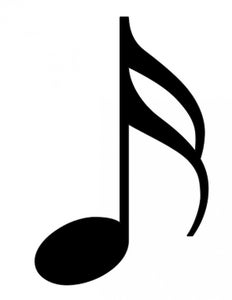
The 16th note looks similar to the 8th note, but with two tails instead of one.
The duration of this note is also half of the previous 8th note, meaning it is worth one-quarter of a beat.
32nd Note (Demisemiquaver)

Following the same theme, the 32nd note has one more tail than the 16th note. Meaning that, the 32nd note is worth half the value of a 16th note, thus it is worth one-eighth of a crotchet beat.
Other Notes:
The 6 notes mentioned above are the most commonly used notes that you will find within the musical notation, and with which you will have to become familiar with if you choose a career route that requires reading sheet music. However, they are not the only ones. In theory, this list could go on. The note after the 32nd note could then be halved yet again, and its symbol would have yet another flag, and so on and on. Yet whatever happens in the music, the proportions between the note values never changes as the proportions are always the same.
64th note (Hemidemisemiquaver)
A 64th note is the same as a 32nd note, but with another tail to equal a total of four tails. Its duration is one-sixteenth of a beat.
There are even shorter notes like the 128th note and the 256th note, but they are so extremely rare that they are not worth explaining.
Double Whole Note (Breve)
This note is the same as the whole note, but it is sandwiched between two vertical lines, which are not stems. The duration of this note is twice as long as the whole note, a total of eight beats. It is also quite rare but more common than those discussed above.
To correctly remember the duration scale, it can be useful to make a pyramidal structure, dividing each note into two of the notes that last half its length and so on, giving you some idea of the general duration of the notes.
Stem Notes
We mentioned the stems in the notes pointed upwards, but they can also point downwards. Its position depends on the note's own position on the pentagram.
All the notes that carry them are drawn with the stem to the right of the head of the note and upwards when the represented sound is below the third line of the pentagram. When the note is above it, they are drawn with the stem to the left of the note head and down.
In the case that the head of the note is on the third line, the stem can go up or down, but it will also depend on the position of the stems of previous notes since they will influence their tails to join.
Note Tails
The tails also change depending on the position of the note, but they act differently.
Tails, wherever they are placed, will always be on the right side of the stem. They follow the same criteria as the stems.
To help us remember the tails are always in the same direction. We have to remember they go in the same direction we read, to the right.
Beaming Notes Together
When several notes with tails are found side by side on the pentagram and are part of the same beat unit, these tails are joined more or less horizontally (depending on the position of the notes within the pentagram) in bands that join the stems of said notes.
The number of bands that can be joined coincides with the number of queues of each note that can be joined.
If the combination of two 16th notes and an eighth note in the middle occurs, a band between the three will join, but an unclosed band will be displayed between the three notes.
Dotted Notes
Placing a small point to the right of the musical notes serves to lengthen a note if we need it. That small point’s purpose is to add half the original duration of the note on which it is placed. In a half note, it would add the duration of a quarter note. More than one point can be added, each time adding half the duration of the previous point added. In the previous example, with a colon, we would add a quarter note and an eighth note to the half note.
Tied Notes
This symbol in the sheet music serves to join the notes that are in the same position within the pentagram.
This horizontal parenthesis joins two notes in the same position and adds their durations. For example, two half notes joined together to form a whole note. You can also join notes with different lengths, just as you can place several joins in a row.
Rests & When Not to Play
As with musical notes, there are also different symbols that indicate silence when we are interpreting a staff, and these also change their design depending on the duration of said silence.
The symbols of silence, unlike musical notes, have a fixed position within the lines of the staff.
What are Ornaments?
Ornaments are small symbols generally placed on top of musical notes to more simply indicate specific musical structures.
There are many different ornaments, each with a different musical structure. Among them, we find the trill, whose function is to add to that note a rapid alternation between that note and one of the adjacent notes. Another example is the groupet, which is a succession of four notes placed in ascending order minus the last one that descends on the scale.
What are Triplets?
Triplets are structures of three notes in the same position and duration that are played in the time in which two would be played. That is to say, in the example of having to play three half notes, instead of taking six beats, it takes four beats, which makes the composition more dynamic.
What are Duplets?
Duplets are a structure opposite to triplets. In this case, the duplet is made up of two musical notes with the same duration and position, which take the turn of three of them to sound.
Wrapping Up
These are the basic knowledge you will need to start playing your first pieces without being scared of paper. Obviously, it is not all, since there is still knowledge to learn it wouldn't be very good to teach it to an initial first, but it begins by learning to read the staves, as well as when singing the notes.
It is easy to improve in these areas. It's simply necessary to practice reading these staves, practice the notes with the instruments, and keep studying up on basic music theory knowledge.
Once you acquire all the information to read the musical notes with some ease, it will be time to move forward and put more complicated ideas to advance in the world of music.
When your song is ready to go, it's time to start promoting it to potential fans! Omari has the best organic promotion services money can buy. With packages for Spotify, TikTok, Instagram, and YouTube, we will get your music the traffic and attention it deserves! Click below for more information.
SPEAK YOUR MIND
How This INDIE Artist Got Over 67,598,275 Streams On ONE Song
Join the No-Nonsense Music Marketing Newsletter to get the most valuable weekly case studies and strategies to grow your music business!

